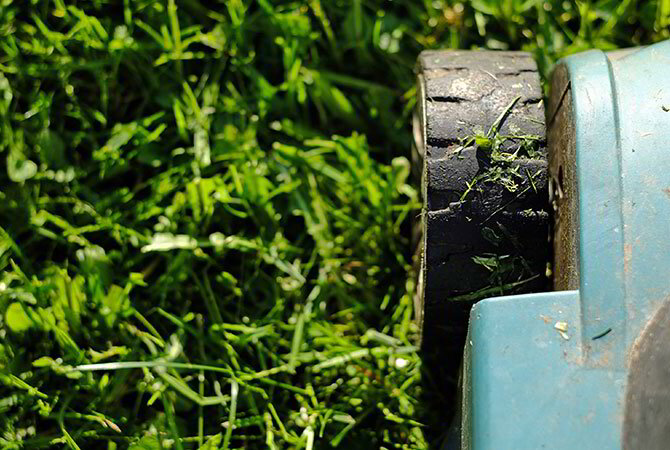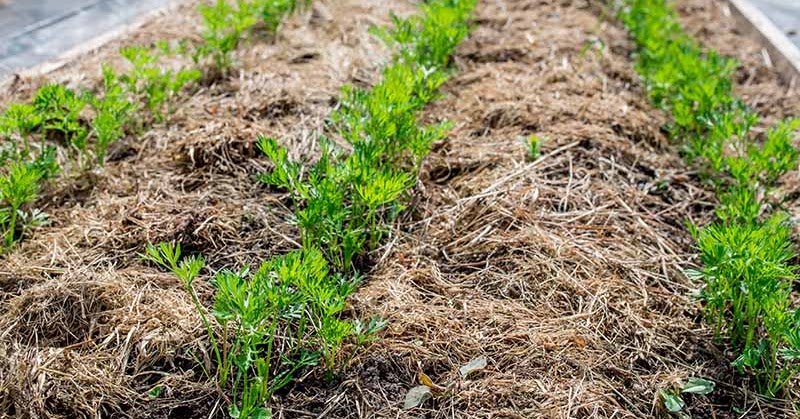
Grass clippings are high in nutrients like nitrogen, phosphorus and potassium, which is very beneficial for your compost heap. Rather than just tossing them in the recycling bin, there’s many more useful things you can use your grass clippings for. However, if you really can’t stand the thought of not having a tidy and neat looking lawn, leaving your grass clippings to decompose on the grass might be a challenge for you. Leaving overly long clippings on the grass can also end up stifling the growth of your lawn, so make sure you are mowing regularly and only removing a third of the grass blade. Leaving too many grass clippings on the lawn can cause your grass to lose colour or burn.

It’s a good idea to use your grass clippings on the lawn every so often – but not all the time, especially as we approach winter. Your soil will also feel the benefits, as the clippings encourage earthworms and other beneficial micro-organisms that will improve soil health. Your grass will look greener, and grow stronger and healthier when you re-use your grass clippings to promote growth. And they won’t increase your levels of thatch either. Why buy extra fertiliser for your lawn when you can use what it produces naturally? Short clippings will break down fairly quickly and deposit all those important nutrients back into the soil. Recycling grass clippings can provide a nitrogen boost for your lawn and act as a natural fertiliser. But you’re missing out on the opportunity to add some quality nutrients to your lawn – for free. If you’re a fan of the smooth, perfectly manicured look, you probably shudder at the thought of leaving your grass clippings on the lawn. Should you leave your grass clippings on the lawn? Grass clippings are an organic medium that can be put to good use in a number of ways that you might not have thought of. But each time we dump our grass clippings we’re missing a golden opportunity to use this natural resource for something that’s both environmentally friendly and practical. Use our Grasstimator tool to figure out how much you need or order online today.Many people consider mowing the grass to be a bit of a chore – and disposing of the grass clippings afterwards can be another one. We grow all of our sod in the rich atmosphere of the Texas coastal plains and deliver it to your door healthy and ready to grow. The Grass Outlet is your premier source for Texas sod. The bottom line is, don’t throw away your grass clippings! They will help you achieve a healthier, more beautiful lawn. You will probably have to rake the rows of clippings to get them to settle evenly. Mow your lawn around the outer edge and continue to the center. Don’t have a mulching lawnmower? First take the bag or catcher off your mower. The great thing is, many mowers already have a mulching function that cuts clippings into fine pieces and scatters them as you mow. Additionally, using an organic material like grass clippings improves the soil structure, or how the individual soil particles combine. Grass clippings that settle into the soil of your lawn return nutrients to that soil, lessening the need for fertilizers and enhancing the health and growth of your turf. That’s not to say grass clippings are worthless-far from it. Check with a local gardening company to find the mulch most suited to your garden.

Shredded bark, compost or cocoa hull mulch would all be better choices for plant and flower beds. Appearance – Grass clippings turn a light yellowish brown when dried out, which does not add visual appeal to your garden.Compaction – Clippings are not ideal for plant beds because after they dry and settle they compact by a few inches, not yielding much of a benefit to your soil.This process produces a pretty strong, unpleasant odor that you probably will not want competing with your prize-winning roses. Odor –Grass clippings decompose rapidly because of their water content.Contamination – If you use weed killers or fertilizers on your lawn, the chemicals on the clippings you’re using as mulch could damage your plants.Grass clippings are not the best choice for your plant or flower beds for multiple reasons: But should you be using mulched grass clippings across the board? The quick answer is “no”. Grass clippings, once thrown away without a second thought by homeowners, are now known as an effective type of mulch. It can help plant beds as well as your grass by conserving moisture, preventing weed growth and adding needed nutrients back into the soil.


 0 kommentar(er)
0 kommentar(er)
